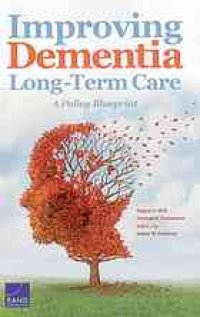"In 2010, 15 percent of Americans older than age 70 had dementia, and the number of new dementia cases among those 65 and older is expected to double by the year 2050. As the baby boomer generation ages, many older adults will require dementia-related long-term services and supports (LTSS). This blueprint is the only national document to date that engages local, state, and national stakeholders to specifically focus on policy options at the intersection of dementia and LTSS. The authors undertook five major tasks that resulted in a prioritized list of policy options and research directions to help decisionmakers improve the dementia LTSS delivery system, workforce, and financing. These were to (1) identify weaknesses in the LTSS system that may be particularly severe for persons with dementia; (2) review national and state strategies addressing dementia or LTSS policy; (3) identify policy options from the perspective of a diverse group of stakeholders; (4) evaluate the policy options; and (5) prioritize policy options by impact and feasibility. Stakeholders identified 38 policy options. RAND researchers independently evaluated these options against prespecified criteria, settling on 25 priority options. These policy options can be summarized into five objectives for the dementia LTSS system: (1) increase public awareness of dementia to reduce stigma and promote earlier detection; (2) improve access to and use of LTSS; (3) promote high-quality, person- and caregiver-centered care; (4) provide better support for family caregivers of people with dementia; and (5) reduce the burden of dementia LTSS costs on individuals and families. This policy blueprint provides a foundation upon which to build consensus among a larger set of stakeholders to set priorities and the sequencing of policy recommendations"-- Read more...
Summary : Dementia, a looming epidemic --
Introduction : statement of the problem --
Stakeholder-engaged policy identification --
RAND policy evaluation and blueprint recommendations.